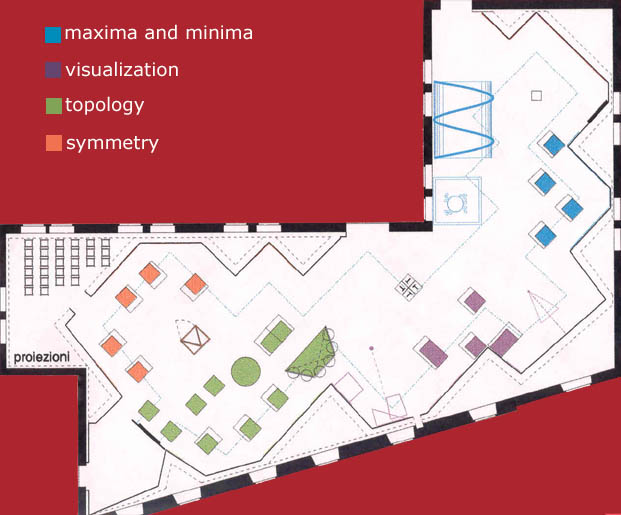|
|
|||
|
|
|||
 |
|||
|
Practical
informations Scientifical-didactical
informations
|
|||
 |
|
The exhibition opens with some views on the scientific and/or productive worlds of Milan and its nearby suburbs. Without pretending to be thorough, these views intend to offer some examples of mathematical applications to everyday life: they want visitors to be surprised in front of employments a priori very far from the mental picture of maths that outsiders have and they want them to be interested in those basic mathematical pieces of knowledge explained in the remaining part of the show. It happens to everyone
to look for the shortest way to go from a place to another one or to be careful with one's money:
everyday life is an endless attempt to do the least effort to obtain the best result. This attempt
is particularly important as for the scientific and technological milieu where models, used to describe
phenomena and to project structures, often rely on minimum or maximum principles. Is it possible to rebuild the tridimensional object we are dealing with in a precise way, given no more than a plane representation and without other pieces of information? What difficulties are coming out if one wants to rebuild a real object starting from one of its images? The aim of the visualization part is to answer these questions and prove, thanks to different tests, that the one vision is not sufficient to rebuild the original objects. In some situations the shape and the size of an object, or the length of an itinerary, are no longer important; the elements which are in fact important in this new context are in a sense more "essential" elements, as for example the properties of objects that wouldn't change even if they were rubber made and if it was possible to distort them at will (without breaking them). Topology is the subject dealing with these situations and in the third part tests want to give an idea of this meaning in two fields that seem to be very far: the first one deals with knots and the second one is inspired by the plan of Milan. Symmetry is a basic interpretation always used (in a more or less conscious way) to understand the most varied messages coming from the surrounding world. The fourth part has the purpose to point out symmetry (the breaking of symmetry too) in Milan monuments (and not only in monuments) and the suggested tests help people to recognize different kinds of symmetry. |
